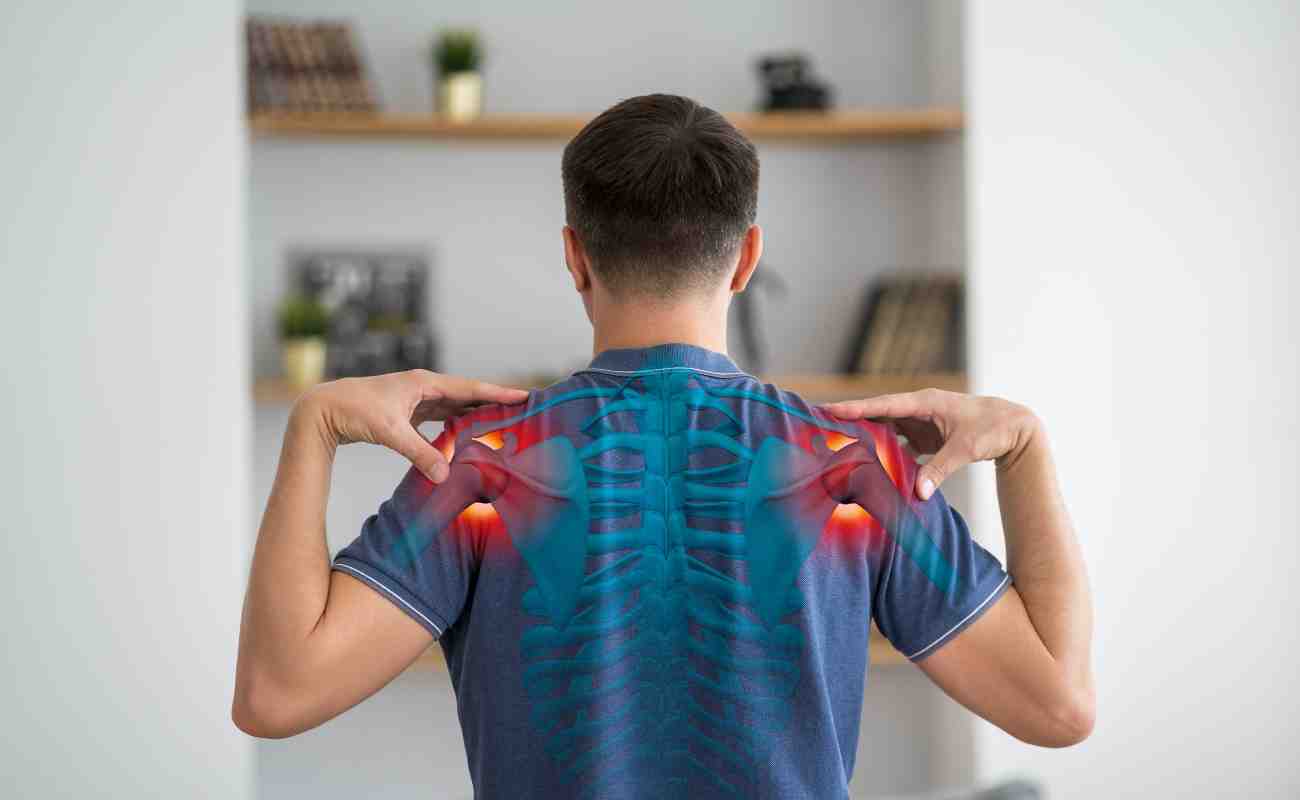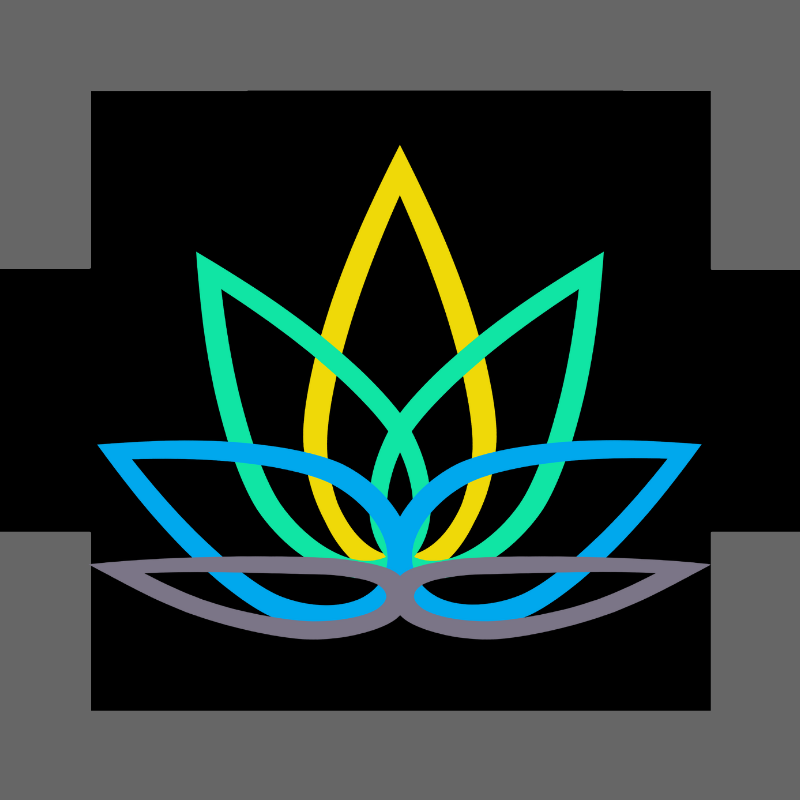
Anatomy of the Shoulder Joint
The shoulder joint or more commonly know as the rotator cuff is a multiaxial ball and socket joint meaning it is one of the most freely moveable joints in the body because of its articulation with the head of the humerus. The shoulder is comprised of the clavicle and scapula which articulate with the humerus at the upper most part. There are 4 joints of the shoulder these include Sternoclavicular (SC), Acromioclavicular (AC), Scapulothoracic, and Glenohumeral (GH) Joints. The joint receives it stabilization from the ligaments of the bones and the tendons of the muscles around the joint. The head of the humerus articulates with the glenoid fossa around a ring know as the labrum. It provides depth of the joint so it can secure it in place as well as rotate the joint.
The Glenohumeral Joint major movements include Abduction; lateral movement away from the body, Adduction; downward medial movement of the humerus coming closer to the body, Flexion; movement of the humerus straight anteriorly, Extension; movement of the humerus straight posteriorly, External Rotation; movement of the humerus laterally away from the midline of the body, Internal Rotation; movement of the humerus medially towards to midline of the body. The muscles around the shoulder joint that support, stabilize and move the joint include; The Deltoid, Teres Major Supraspinatus, Infraspinatus, Teres Minor, Subscapularis and the Trapezius muscles. There are more muscles in the area that all help the shoulder and scapula become mobile.
Rotator Cuff Injuries
Shoulder pain affects millions of people every year this pain is a result from tears of the muscles of the Shoulder and Scapula that occur from trauma, overuse or age degeneration which leads further in a decreased mobility and severe pain. If there is suspected Rotator Cuff Tendonitis it is likely due to repetitious overhead activity which pinches the supraspinatus tendon against the acromion which is the tip of the shoulder.
It causes inflammation around the tendon and in the bursae surrounding the shoulder joint. How can you prevent rotator cuff injuries? By exercising, targeting the small and large muscle groups around the shoulder joint will help strengthen the area. Also, it limits the risk of injury. Having good posture will reduce injury. Avoid repetitious overhead arm activities. When exercising complete low resistance activities then begin adding more reps to strengthen the area. To help reduce inflammation heat and cold compresses are ideal.
Dislocations and Subluxations
The most common dislocation in the shoulder joint is anterior this is due to the arm being extended, externally rotated and abducted with trauma which causes this anterior dislocation. The most common sports where shoulder dislocations occur frequently are high contact sports like rugby, football and hockey. A dislocation can impinge the nerve which will cause decreased sensation and numb deltoid muscle. A subluxation is closely related to a dislocation however the head of the humerus does not completely come out of its socket. How can you prevent dislocations and subluxations?
Try to avoid falling, watch your step and scan the area for tripping hazards or wet floors. If playing a sport with high contact it is very important that all players wear the proper protective gear that is up to standards to reduce the risk of injury or prevent an injury from occurring. Each sport has different protective equipment that should be tailored to the needs of the athlete to reduce injury. Another way to prevent this injury is to exercise regularly and maintain flexibility and strength of the joint.
Adhesive Capsulitis
This is injury is more commonly known as frozen shoulder it occurs more commonly in females over the age of 50. This is the inflammation in the shoulder capsule causing lots of pain with the inclusion of fibrosis and adhesions that heavily limit range of motion. It is also common in people with hypothyroidism and diabetes. The person with this syndrome will feel pain during any movement of the shoulder and notice that range of motion becomes limited (Pain Stage). They will then feel the pain diminish however the shoulder becomes stiff and range of motion decreases (Freeze Stage).
Eventually overtime the range of motion will begin to come back (Thawing Stage). You can get treated however this resolves spontaneously you can get corticosteroid injections or take anti-inflammatory medication to reduce pain. To prevent this from occurring in the other shoulder persons with this condition should mobilize their scapula. This is to be done on the affected side to restore scapulothoracic rhythm. Also to maintain strengthening of the muscles by completing shoulder isometrics.
Strengthening the Shoulder Joint
Stretches
– Across the Chest Stretch
– Neck Releases (Lowering chin to chest and holding, then repeating on by moving neck Left to Right)
– Chest Expansions (Can be used with resistance bands)
– Seated Twists
– Downward Dog
– Thread the Needle (On hands and knees, lift right hand in air and slide the left hand on the ground until there is a stretch felt)
An individual can complete these exercises to strengthen the shoulder joint. This can be done with any type of resistance comfortable to the person these include but are not limited to;
– Shoulder Press
– Front Raises
– Military Press
– Lateral Dumbbell Raises
– Bent over dumbbell lateral raise
Immediate Help through Physiotherapy for Shoulder Pain:
Are you experiencing aching pain in the shoulder area? Looking for relief for frozen shoulder? Want to compare frozen shoulder vs bursitis? Not knowing about how long frozen shoulder recovery would take? Searching for frozen shoulder help from registered therapists? Looking for exercises for frozen shoulder pain?
At Curezone Physiotherapy, our shoulder pain experts in Mississauga and Oakville improve shoulder strength and flexibility with targeted exercises and stretches. For Frozen Shoulder Physiotherapy in Mississauga or Oakville, or if you are searching for “shoulder pain physiotherapy near me”, contact us to start your recovery journey. Call us or book an appointment online with our expert physiotherapists.
Also, check out our other frozen shoulder blog entries for further information on this topic.
Shoulder Pain Treatment Mississauga:
Physiotherapy Clinic Mississauga – Curezone Physiotherapy, Heartland Mississauga.
Physiotherapy Clinic Erin Mills – Curezone Physiotherapy, Erin Mills Mississauga.
Shoulder Pain Treatment Oakville:
Physiotherapy Clinic Oakville – Curezone Physiotherapy, Burloak Oakville.




